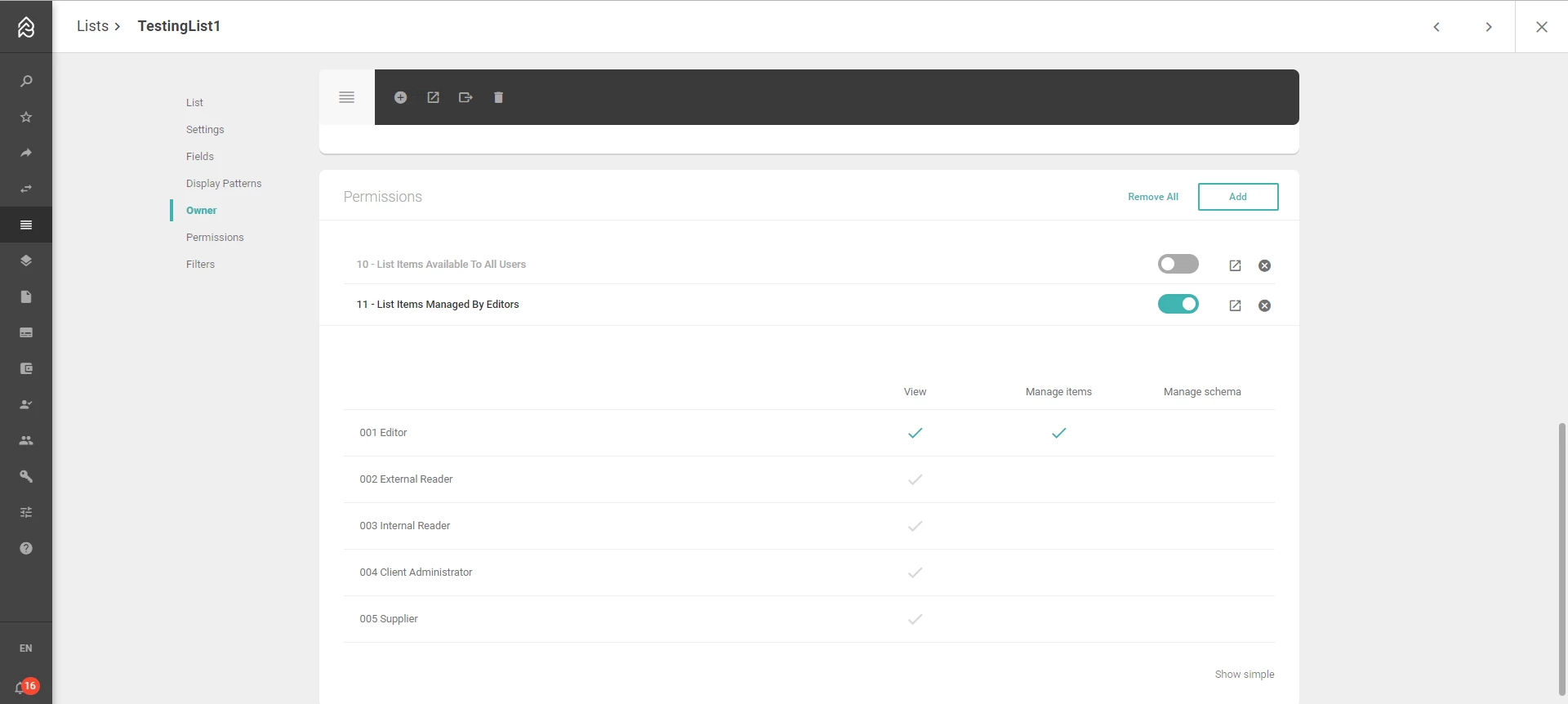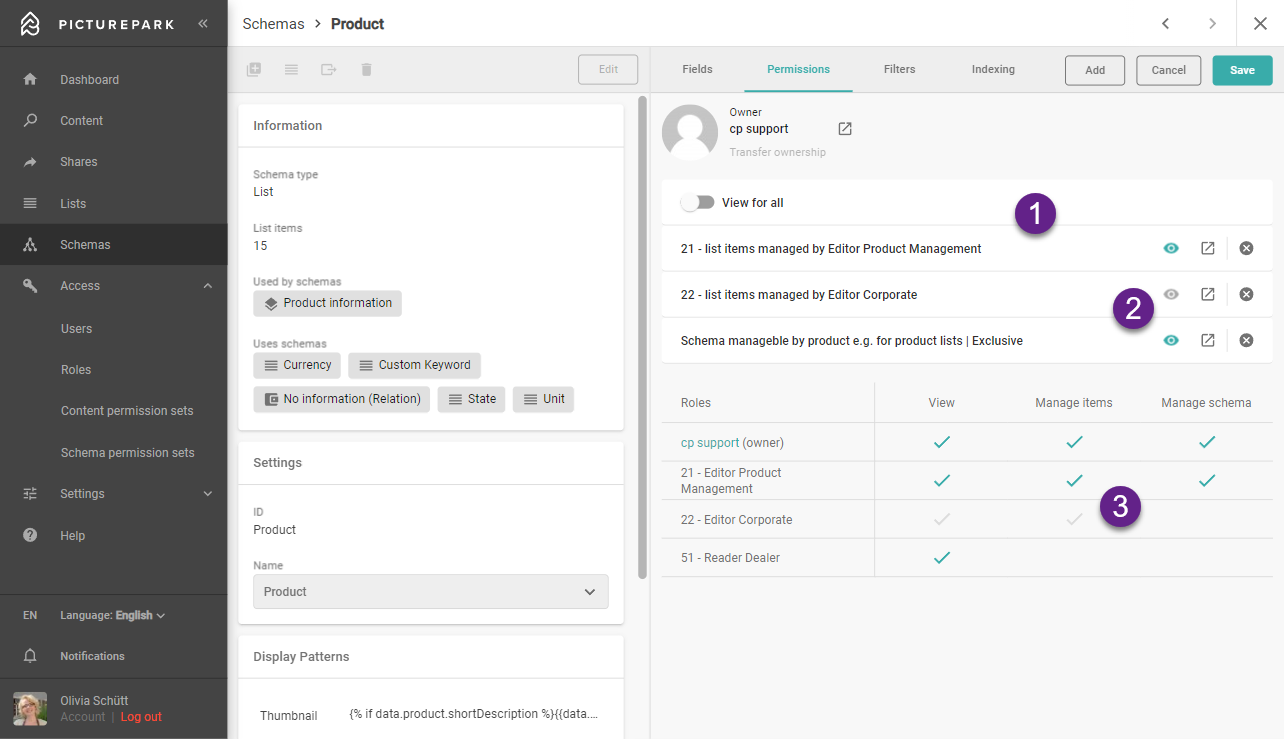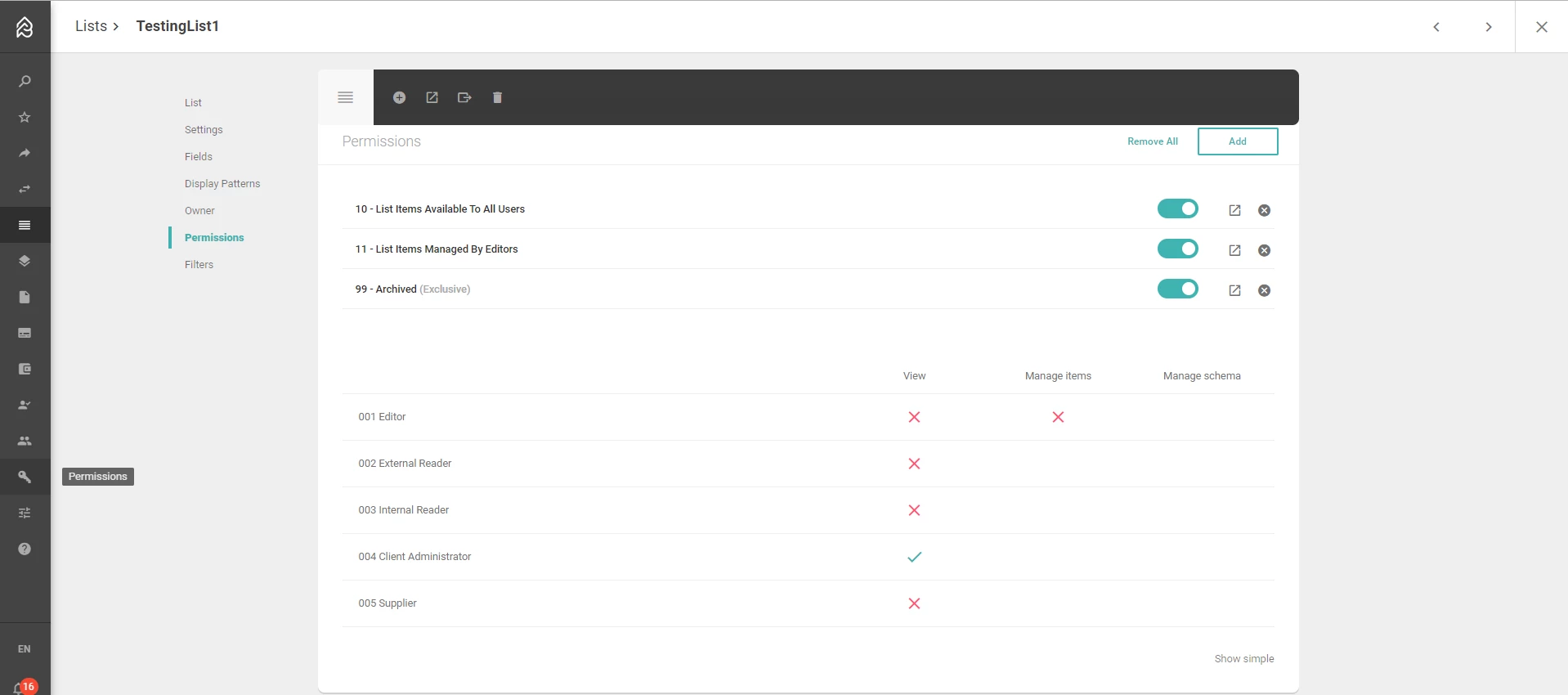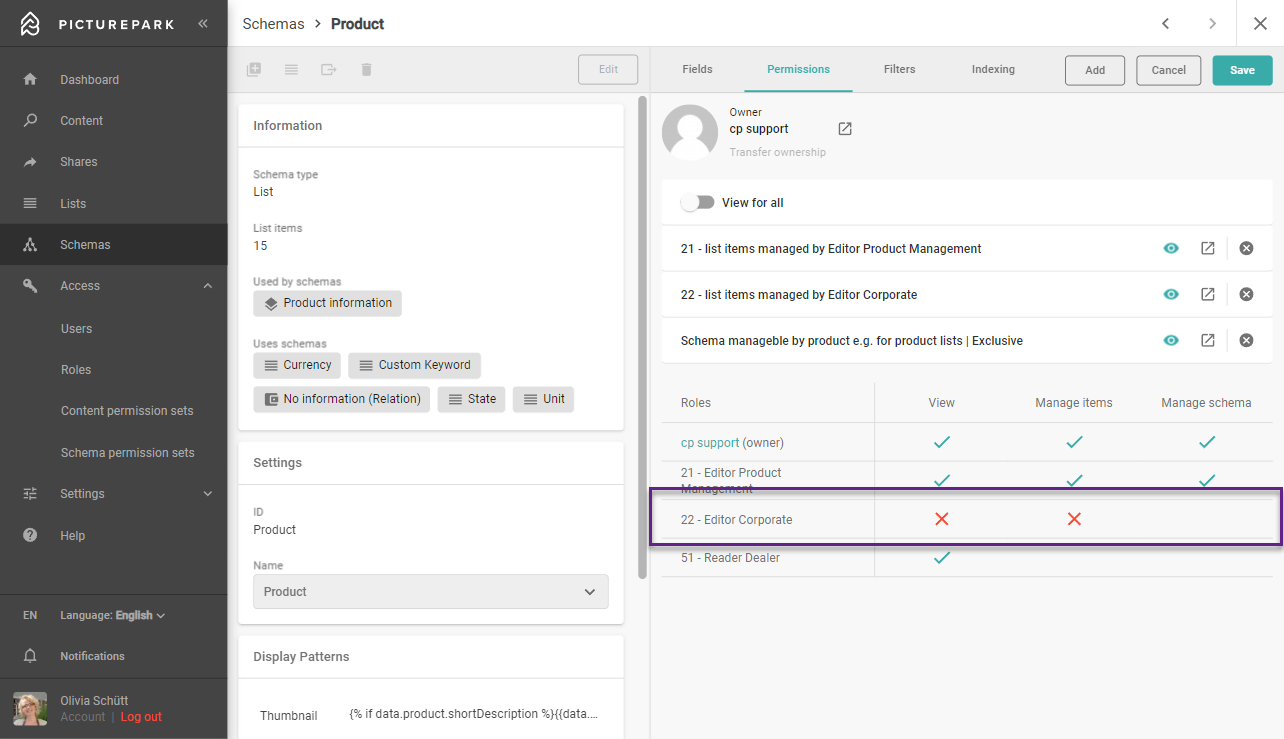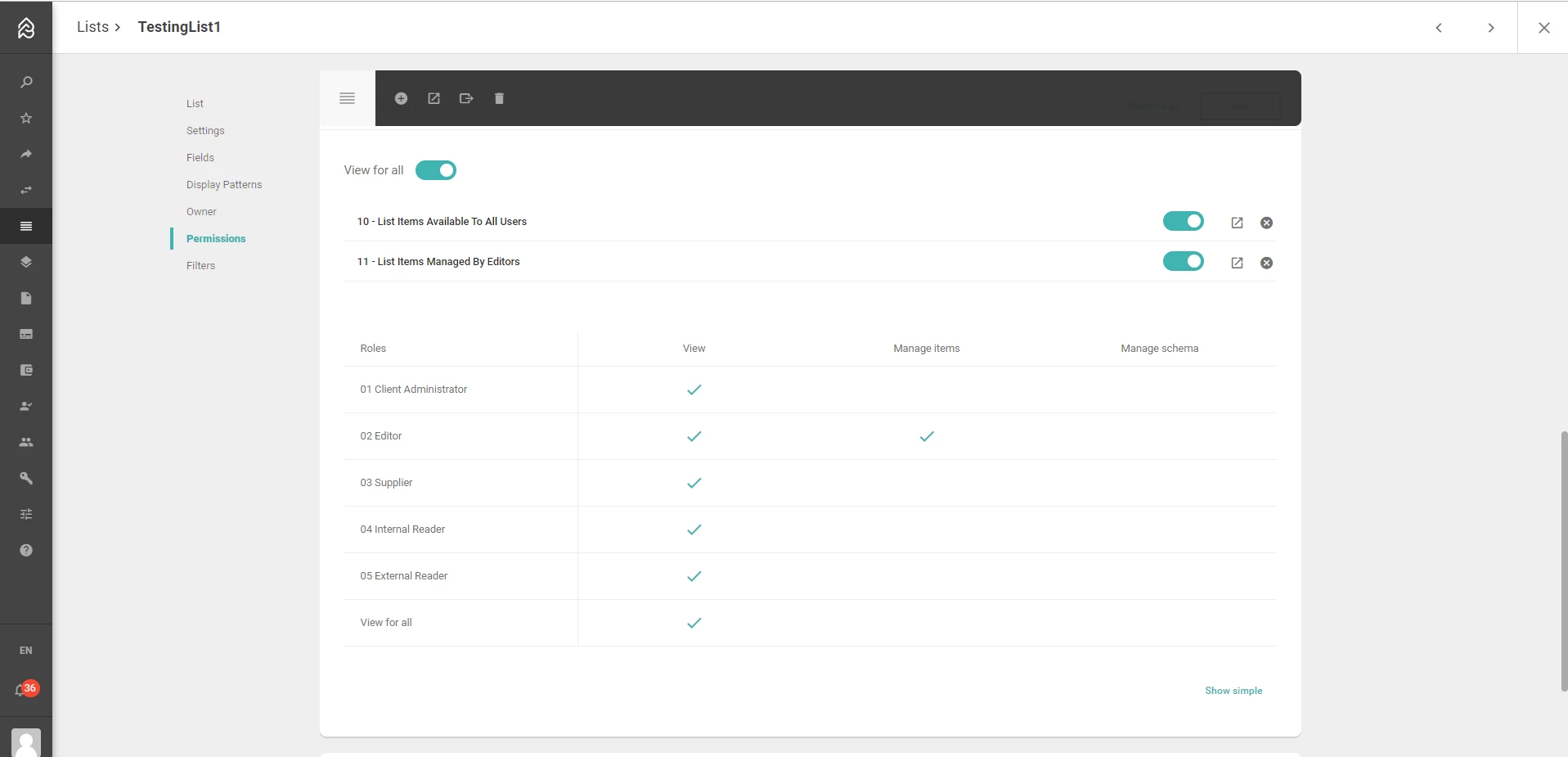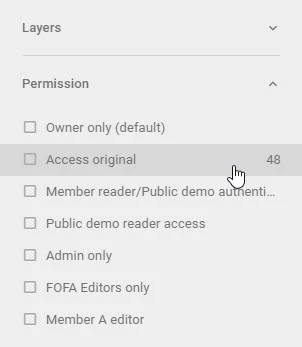| Excerpt | ||||||
|---|---|---|---|---|---|---|
|
| Include Page | ||||
|---|---|---|---|---|
|
| Expand | ||
|---|---|---|
| ||
Create a Content Permission Set
After Creating the Content Permission Set
Select Content or Schema Permission
|
| Expand | ||
|---|---|---|
| ||
Create a Schema permission set
After Creating the Schema Permission SetAdd
|
| Expand | ||
|---|---|---|
| ||
Add Permission Set to SchemaTo add Permission Set a schema permission set to a schema :
* Disable the View for all button . It is currently enabled per, which grants view for all permission by default on theschema creation of a schema.Click on the Save button. VIDEO: How to Add Permission Set to a Schema (List, Layer): permission-set_add-to-schema. |
| Expand | ||
|---|---|---|
| ||
Checking the Effective Permissions on a SchemaAfter adding permissions to a schema you can check the effective permissions using the permission matrix. There you see the (1) applied permission sets with exclusive ones listed in the permission set name and you find the matrix (2) which shows how these permission sets are combined and which permissions are active on the schema . Click on Permissions and then show advancede.g. in the screenshot Editor Corporate do not have access anymore.
VIDEO: How to Check Permission Using Matrix: General RemarksThe advanced view of the permissions applied to a Content Item is not restricted and can be seen by all users that have access to the content item. Please note this is for display only and does not remove Permission Sets from the schema itself. |
| Expand | ||
|---|---|---|
| ||
Permission MatrixAs you can see in the above screenshot there are two three permission sets applied to this schema, and the default “View for all”. As you can see the applied permission sets build on each other. The effective permissions are displayed in the matrix. I can also see what they would be if I removed the permission set for example by turning the slider on or off for each permission set. Please note this is for display only and does not remove permission sets from the schema itself. As you can see the applied permission sets build on each other unless there are exclusive permission sets. In the case of exclusive permission sets, these will negate any non-exclusive permission sets applied. In this example, I have added an Archived (exclusive) Schema managebly by product | Exclusive permission set to the example above. As you can see the negated permissions are denoted with a red cross: If View for all is also enabled ( this effectively gives all users View permission on the schema) then you will see this reflected in the advanced view: . |
| Expand | ||||||||||||||||||||
|---|---|---|---|---|---|---|---|---|---|---|---|---|---|---|---|---|---|---|---|---|
| ||||||||||||||||||||
Access Permission Set in Search or FilterThe Permission Sets of a Content Item are saved in a field called: permissionSetIds Therefore you can access Permission Sets via this field in Display Pattern, Filter, Query Filter, or searches.
|
| Expand | ||
|---|---|---|
| ||
Access Permission Set in Sidebar FilterSome default system fields are used to aggregate Ids from Picturepark system items e.g. permissionSetIds or layerSchemaIds or contentSchemaId and display them in Filters.
|
| Expand | ||
|---|---|---|
| ||
Update a Permission Set
|
| Expand | ||
|---|---|---|
| ||
Update View for All or ExclusiveEnabling View for all in the schema settings applies View Permission to the Schema for all users in the Picturepark. View for all is independent of applied permission sets. Please note that exclusive permission sets will not turn off View for all. If you are applying an exclusive permission set that is intended to "turn off" other non-exclusive permission please do not forget to also disable View for all. |
| Expand | ||
|---|---|---|
| ||
Remove all Permission Sets from Content
VIDEO: How to Remove all Permission Sets from Content: permission-set_removeAll-view-for-all-active |
| Expand | ||
|---|---|---|
| ||
Delete a Permission Set
VIDEO: How to Delete in the Browser View |
| Expand | ||||||||||||
|---|---|---|---|---|---|---|---|---|---|---|---|---|
| ||||||||||||
Delete Content Assigned to a Permission SetTo find the Content Items assigned to a Permission Set (Content) you can filter or search in the Content Browser.
|

